Cults

Thangka paintings of bas-relief
by Cults
Last crawled date: 6 years, 1 month ago
stl,rlf format.bas-relief of Thangka for CNC Router Carving.
A tangkasnet, variously spelt as thangka, tangka, thanka, tangkasnet or tanka (Nepali pronunciation: [ˈथान्का]; Tibetan: ཐང་ཀ་; Nepal Bhasa: पौभा), is a Tibetan Buddhist painting on cotton, silk appliqué, or human skin usually depicting a Buddhist deity, scene, or mandala. Tangkas are traditionally kept unframed and rolled up when not on display, mounted on a textile backing somewhat in the style of Chinese scroll paintings, with a further silk cover on the front. So treated, tangkas can last a long time, but because of their delicate nature, they have to be kept in dry places where moisture will not affect the quality of the silk. Most thankas are relatively small, comparable in size to a Western half-length portrait, but some are extremely large, several metres in each dimension; these were designed to be displayed, typically for very brief periods on a monastery wall, as part of religious festivals. Most thankas were intended for personal meditation or instruction of monastic students. They often have elaborate compositions including many very small figures. A central deity is often surrounded by other identified figures in a symmetrical composition. Narrative scenes are less common, but do appear.
Thangka serve as important teaching tools depicting the life of the Buddha, various influential lamas and other deities and bodhisattvas. One subject is The Wheel of Life (Bhavachakra), which is a visual representation of the Abhidharma teachings (Art of Enlightenment). The term may sometimes be used of works in other media than painting, including reliefs in metal and woodblock prints. Today printed reproductions at poster size of painted thangka are commonly used for devotional as well as decorative purposes. Many tangkas were produced in sets, though they have often subsequently become separated.
Thangka perform several different functions. Images of deities can be used as teaching tools when depicting the life (or lives) of the Buddha, describing historical events concerning important Lamas, or retelling myths associated with other deities. Devotional images act as the centerpiece during a ritual or ceremony and are often used as mediums through which one can offer prayers or make requests. Overall, and perhaps most importantly, religious art is used as a meditation tool to help bring one further down the path to enlightenment. The Buddhist Vajrayana practitioner uses a thanga image of their yidam, or meditation deity, as a guide, by visualizing "themselves as being that deity, thereby internalizing the Buddha qualities"[1] tangkas hang on or beside altars, and may be hung in the bedrooms or offices of monks and other devotees.
——From Wikipedia
Follow me,you will get more free and cheap models.
Best regards.
A tangkasnet, variously spelt as thangka, tangka, thanka, tangkasnet or tanka (Nepali pronunciation: [ˈथान्का]; Tibetan: ཐང་ཀ་; Nepal Bhasa: पौभा), is a Tibetan Buddhist painting on cotton, silk appliqué, or human skin usually depicting a Buddhist deity, scene, or mandala. Tangkas are traditionally kept unframed and rolled up when not on display, mounted on a textile backing somewhat in the style of Chinese scroll paintings, with a further silk cover on the front. So treated, tangkas can last a long time, but because of their delicate nature, they have to be kept in dry places where moisture will not affect the quality of the silk. Most thankas are relatively small, comparable in size to a Western half-length portrait, but some are extremely large, several metres in each dimension; these were designed to be displayed, typically for very brief periods on a monastery wall, as part of religious festivals. Most thankas were intended for personal meditation or instruction of monastic students. They often have elaborate compositions including many very small figures. A central deity is often surrounded by other identified figures in a symmetrical composition. Narrative scenes are less common, but do appear.
Thangka serve as important teaching tools depicting the life of the Buddha, various influential lamas and other deities and bodhisattvas. One subject is The Wheel of Life (Bhavachakra), which is a visual representation of the Abhidharma teachings (Art of Enlightenment). The term may sometimes be used of works in other media than painting, including reliefs in metal and woodblock prints. Today printed reproductions at poster size of painted thangka are commonly used for devotional as well as decorative purposes. Many tangkas were produced in sets, though they have often subsequently become separated.
Thangka perform several different functions. Images of deities can be used as teaching tools when depicting the life (or lives) of the Buddha, describing historical events concerning important Lamas, or retelling myths associated with other deities. Devotional images act as the centerpiece during a ritual or ceremony and are often used as mediums through which one can offer prayers or make requests. Overall, and perhaps most importantly, religious art is used as a meditation tool to help bring one further down the path to enlightenment. The Buddhist Vajrayana practitioner uses a thanga image of their yidam, or meditation deity, as a guide, by visualizing "themselves as being that deity, thereby internalizing the Buddha qualities"[1] tangkas hang on or beside altars, and may be hung in the bedrooms or offices of monks and other devotees.
——From Wikipedia
Follow me,you will get more free and cheap models.
Best regards.
Similar models
3dwarehouse
free

Tibetan Thangka
... offer a beautiful manifestation of the divine, being both visually and mentally stimulating. #asia #bhutan #china #ladakh #tibet
cg_trader
$30

Buddha | 3D
...machine and 3d printing. buddha god religion meditation buddhism religiou object medalion pedant jewelry buddhist deity art other
cg_trader
$3

Thangka or Tibetan painting
...an painting
cg trader
3d model thangka or tibetan painting thangka tibetan, formats obj, mtl, stl, ready for 3d animation and ot
grabcad
free

Buy Exclusive Tibetan Thangka Painting | London | Gammas Art Gallery
...curated luxurious collection of nepalese & tibetan masterpieces. explore the meaning behind what is thangka & mandala
cg_trader
$4

Thangka
...hangka
cg trader
3d thangka artcam bas-relief bodhisattva buddha character, available in obj, stl, ready for 3d animation and ot
cg_trader
$25

Buddha | 3D
...red river and tree.
spiritual bass relief lotus buddha religion relief cnc figurine buddhist buddhistic decoration holy art other
3dwarehouse
free

Tibetan Temple stupa
...buddha statue and gurupadmasambhava's statue amongst others,' said tenkyab lama, manager, buddha temple committee. #stupa
3dwarehouse
free

Monastery Tibetan Temple
...ha statue and gurupadmasambhava's statue amongst others,' said tenkyab lama, manager, buddha temple committee. #monastery
3dwarehouse
free

Room Tibetan Temple
... buddha statue and gurupadmasambhava's statue amongst others,' said tenkyab lama, manager, buddha temple committee. #room
cg_trader
$5

Thangka-Tibetan painting | 3D
...nting | 3d
cg trader
3d print model thangka-tibetan painting eagle, formats include obj, mtl, stl, ready for 3d animation and ot
Thangka
sketchfab
$10

Thangka
...
normal
specular
* ambient occlusion
* ids map - thangka - buy royalty free 3d model by francesco coldesina (@topfrank2013)
cg_trader
$4

Thangka
...hangka
cg trader
3d thangka artcam bas-relief bodhisattva buddha character, available in obj, stl, ready for 3d animation and ot
cg_trader
$3

Thangka or Tibetan painting
...an painting
cg trader
3d model thangka or tibetan painting thangka tibetan, formats obj, mtl, stl, ready for 3d animation and ot
grabcad
free

What is Thangka
...uli, cinnabar, sulfur, azurite, malachite etc 🌟 to buy exclusive thangka paintings visit our online shop!
https://www.gammas.com
cg_trader
$5

Thangka-Tibetan painting | 3D
...nting | 3d
cg trader
3d print model thangka-tibetan painting eagle, formats include obj, mtl, stl, ready for 3d animation and ot
grabcad
free

Buy Exclusive Tibetan Thangka Painting | London | Gammas Art Gallery
...curated luxurious collection of nepalese & tibetan masterpieces. explore the meaning behind what is thangka & mandala
3dwarehouse
free

Tibetan Thangka
... offer a beautiful manifestation of the divine, being both visually and mentally stimulating. #asia #bhutan #china #ladakh #tibet
3dwarehouse
free

Auroras Laughter Art Car
...the top is framed in the style of a thangka a divine emanation • create a safe and comfortable...
Tibet
3ddd
free

Free_Porcelanosa tibet black
...porcelanosa tibet black
3ddd
porcelanosa , tibet
porcelanosa tibet mosaico black 31,6x90
3ddd
$1

Opadiris Tibet 50
...opadiris tibet 50
3ddd
ere , opadiris
opadiris tibet 50_56x45x86_51x12x103_40x37x198
3d_export
$65

tibet corridor
...tibet corridor
3dexport
simple rendering of the scene file
3ddd
$1

KUTAHYA SERAMIK TIBET
...14, 2013, 2011.
obj.
_____________________________________http://www.ngkutahyaseramik.com.tr/en/products/seramik/tibet/
3d_export
$10

tibet prayer wheel
...tibet prayer wheel
3dexport
tibet prayer wheel modelled on blender 3d just buy and you can use for all your projects
3d_export
$10

Tibet right
...tibet right
3dexport
dimensions of the pencil case 404/1982/380 mm
turbosquid
$8

LAMPE and SUSPENSION TIBET
... lampe and suspension tibet for download as max, fbx, and obj on turbosquid: 3d models for games, architecture, videos. (1632077)
3d_export
$65

tibet potala palace
...tibet potala palace
3dexport
simple rendering of the scene file
3d_export
$15

old lady of tibet
...old lady of tibet
3dexport
simple rendering of the scene file
3ddd
$2

Плитка Porcelanosa Tibet - 4 вида
... плитка
плитка porcelanosa tibet - 4 вида:
-arena
-black
-stone
-caliza
размер одного плитка - 31,6х90 см
Tibetan
turbosquid
$25

Tibetan Flag
... available on turbo squid, the world's leading provider of digital 3d models for visualization, films, television, and games.
3d_export
$65

tibetan architecture
...tibetan architecture
3dexport
simple rendering of the scene file
3d_export
$65

tibetan crowd
...tibetan crowd
3dexport
simple rendering of the scene file
3d_export
$25

tibetan architecture
...tibetan architecture
3dexport
simple rendering of the scene file
3d_export
$25

Tibetan house
...tibetan house
3dexport
simple rendering of the scene file
3d_export
$25

tibetan architecture
...tibetan architecture
3dexport
simple rendering of the scene file
3d_export
$15

tibetan women
...tibetan women
3dexport
simple rendering of the scene file
3d_export
$15

tibetan men
...tibetan men
3dexport
simple rendering of the scene file
cg_studio
$10

Tibetan sheepskin olive3d model
...an sheepskin olive pile
.max - tibetan sheepskin olive 3d model, royalty free license available, instant download after purchase.
turbosquid
$49

Tibetan cherry tree
...d model tibetan cherry tree for download as max, fbx, and obj on turbosquid: 3d models for games, architecture, videos. (1523653)
Buddhism
turbosquid
$15

Buddhism Symbol
...buddhism symbol for download as blend, dae, fbx, obj, and stl on turbosquid: 3d models for games, architecture, videos. (1622825)
3d_export
$12

Buddhism-Inspired Furniture 3D Model
...hair armchair
buddhism-inspired furniture 3d model download .c4d .max .obj .fbx .ma .lwo .3ds .3dm .stl dimonkr17 110541 3dexport
3d_export
$18

religion-buddhism-dahonglu temple 01
...religion-buddhism-dahonglu temple 01
3dexport
religion-buddhism-dahonglu temple 01<br>3ds max 2015
3d_export
$18

religion-buddhism-dahonglu temple-indoor
...religion-buddhism-dahonglu temple-indoor
3dexport
religion-buddhism-dahonglu temple-indoor<br>3ds max 2015
3d_export
$13

buddhism symbol
...for high-quality render results. no extra plugins are required for this model. lights and cameras are not included in the scenes.
3d_export
$200

Tian Tian Buddha 3D Model
...tian tian buddha 3d model 3dexport buddha temple tian buddhism chinese hong kong tian tian buddha 3d model lvgart...
3d_export
$99

Sitting Buddha 3D Model
...sitting buddha 3d model 3dexport buddha buddhism sitting religion statue spiritual zen karma meditation meditate figurine...
3d_export
$15

Buddha Velvet figurine 3D Model
...figurine 3d model 3dexport figurine statue buddha velvet india buddhism pop contemporary art buddha velvet figurine 3d model dr540...
3d_export
$100

Dragon collection 3D Model
...model 3dexport dragon china chinese stone jade ivory religion buddhism buddha poly high 3d model dragon collection 3d model...
3d_ocean
$15

China Town Portal
...china town portal 3docean asia asian buddhism building china city door fantasy home house japan japanese...
Buddha
3d_ocean
$19

Buddha
...buddha
3docean
bronze budda buddha minted statue
statue of a buddha, with customized material hammered bronze.
archibase_planet
free

Buddha
...buddha
archibase planet
statue buddha picturesque element
buddha n021009 - 3d model (*.gsm+*.3ds) for interior 3d visualization.
archibase_planet
free

Buddha
...buddha
archibase planet
statuette buddha statue
sculpture n190708 - 3d model (*.gsm+*.3ds) for interior 3d visualization.
turbosquid
$8

Buddha
...uid
royalty free 3d model buddha for download as obj and stl on turbosquid: 3d models for games, architecture, videos. (1288713)
3ddd
$1

Buddha statue
...buddha statue
3ddd
статуэтка
decorative buddha statue
3ddd
$1

Buddha
...buddha
3ddd
статуэтка
decortaion
turbosquid
$80

Buddha
...y free 3d model buddha for download as c4d, fbx, obj, and 3ds on turbosquid: 3d models for games, architecture, videos. (1690093)
3ddd
$1

buddha
...buddha
3ddd
будда
buddha
2011max+fbx, +obj
corona render
габаритные размеры
высота 337 мм, ширина 244 мм,
длина 138мм
turbosquid
$100

Buddha
... available on turbo squid, the world's leading provider of digital 3d models for visualization, films, television, and games.
turbosquid
$19

Buddha
... available on turbo squid, the world's leading provider of digital 3d models for visualization, films, television, and games.
Artcam
3d_export
$36

shiv parvati 3d relief for vectric and artcam applications
...inters. it works with artcam, aspire, cut3d, 3d max. after purchase, you will able to download the zip archive with the 3d model.
3d_export
$12

cross 3d relief for vectric and artcam applications
... zip archive with the 3d model. instant download immediately after payment! we guarantee high quality of all presented 3d models.
turbosquid
$29

4 Pcs 3d STL Models for CNC routers artcam
... pcs 3d stl models for cnc routers artcam for download as stl on turbosquid: 3d models for games, architecture, videos. (1150788)
3d_export
$38

ganesh god 3d relief for vectric and artcam applications
... zip archive with the 3d model. instant download immediately after payment! we guarantee high quality of all presented 3d models.
3d_export
$12

lion decor 3d relief for vectric and artcam applications
... zip archive with the 3d model. instant download immediately after payment! we guarantee high quality of all presented 3d models.
3d_export
$38

shiv parvati framed 3d relief for vectric and artcam applications
... zip archive with the 3d model. instant download immediately after payment! we guarantee high quality of all presented 3d models.
3d_export
$48

26pcs animal plate set 3d relief for vectric and artcam applications
... zip archive with the 3d model. instant download immediately after payment! we guarantee high quality of all presented 3d models.
turbosquid
$5

(75) STL Model for CNC Router Machine, 3d Printer, Aspire, Artcam
... available on turbo squid, the world's leading provider of digital 3d models for visualization, films, television, and games.
turbosquid
$5

(74) STL Model for CNC Router Machine, 3d Printer, Aspire, Artcam
... available on turbo squid, the world's leading provider of digital 3d models for visualization, films, television, and games.
turbosquid
$5

(73) STL Model for CNC Router Machine, 3d Printer, Aspire, Artcam
... available on turbo squid, the world's leading provider of digital 3d models for visualization, films, television, and games.
Bas
3ddd
$1

BAS Nikol
..., bas nikol , bas
моделирование ванны bas nikol
3ddd
free

BAS Alegra
...bas alegra
3ddd
bas , ванна
угловая ванна, фирма bas
3ddd
$1

BAS Fantasy
...bas fantasy
3ddd
bas , ванна
ванна
3ddd
$1

BAS Laguna
...bas laguna
3ddd
bas , ванна
ванна
3ddd
$1

BAS Riola
...bas riola
3ddd
bas , ванна
ванна
3ddd
$1

BAS Mega
...bas mega
3ddd
bas , ванна
ванна
3ddd
$1

BAS Sagra
...bas sagra
3ddd
bas , ванна
ванна
3ddd
free

BAS Imperial
...bas imperial
3ddd
bas , ванна
ванна
3d_export
free

Bas Guitar
...bas guitar
3dexport
red bas guitar. made in blender
archibase_planet
free

Bas-relief
...hibase planet
bas-relief decoration sculpture
bas-relief elephant n190813 - 3d model (*.gsm+*.3ds) for interior 3d visualization.
Relief
3d_export
$20

relief
...relief
3dexport
relief
turbosquid
$1

Relief
...
turbosquid
royalty free 3d model relief for download as obj on turbosquid: 3d models for games, architecture, videos. (1438537)
3d_export
$15

horse relief
...horse relief
3dexport
horse relief
3d_export
$10

jesus relief
...jesus relief
3dexport
jesus relief
3d_export
$10

rome relief
...rome relief
3dexport
rome relief
3d_export
$10

fish relief
...fish relief
3dexport
fish relief
3d_export
$10

eagle relief
...eagle relief
3dexport
eagle relief
3d_export
$10
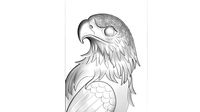
eagle relief
...eagle relief
3dexport
eagle relief
3d_export
free

3d relief
...3d relief
3dexport
3d relief
turbosquid
free
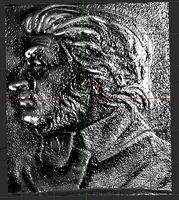
Relief
... available on turbo squid, the world's leading provider of digital 3d models for visualization, films, television, and games.
China
3d_export
$10

china
...china
3dexport
3ddd
$1

china flag
...china flag
3ddd
флаг
china flag
turbosquid
$50

China
... available on turbo squid, the world's leading provider of digital 3d models for visualization, films, television, and games.
turbosquid
$3

china
... available on turbo squid, the world's leading provider of digital 3d models for visualization, films, television, and games.
3ddd
free

мебель China
..., стол , стул
мебель china+ текстуры, материалы
design_connected
$16

China Chair
...china chair
designconnected
fritz hansen china chair computer generated 3d model. designed by wegner, hans.
3ddd
$1

China Chair
... om
модель омfritzhansen стул , china chairисточник: http://www.fritzhansen.com
3d_export
$35

China Terrain
...china terrain
3dexport
3ddd
$1

Умывальник Mindo (China)
...умывальник mindo (china)
3ddd
умывальник mindo (china) - стекло
turbosquid
$8

China Cupboard
...d
royalty free 3d model china cupboard for download as blend on turbosquid: 3d models for games, architecture, videos. (1325993)
Oriental
design_connected
$13

Orient
...orient
designconnected
lightyears orient computer generated 3d model. designed by hammerborg, jo.
3d_export
$10

oriental beauty
...oriental beauty
3dexport
oriental beauty
3ddd
$1

oriental sideboard
...oriental sideboard
3ddd
комод
oriental sideboard
3ddd
$1

oriental door
...oriental door
3ddd
двери
oriental door
turbosquid
$1

oriental
... available on turbo squid, the world's leading provider of digital 3d models for visualization, films, television, and games.
3ddd
free

oriental window
...oriental window
3ddd
витраж , окно
colored window on oriental way
3ddd
$1

Orient Titanium
... наручные , часы
довольно качественная модель вышла :)
3ddd
$1

Наручные часы Orient
...d
orient , наручные , часы
наручные часы orient
turbosquid
$15

Oriental Dagger
...squid
royalty free 3d model oriental dagger for download as on turbosquid: 3d models for games, architecture, videos. (1694789)
3ddd
$1

Futura диван Oriente
...futura диван oriente
3ddd
futura диван oriente
Mold
3ddd
$1

molding
...molding
3ddd
молдинг
molding
3ddd
$1
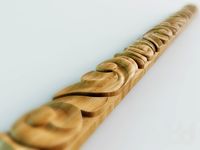
molding
...molding
3ddd
молдинг , резьба
molding
3d_export
$10
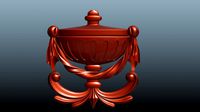
molding
...molding
3dexport
molding, casting, baguette, decoration
3d_export
$10

molding
...molding
3dexport
molding, casting, baguette, decoration
3d_export
$10

molding
...molding
3dexport
molding, casting, baguette, decoration
3d_export
$10

molding
...molding
3dexport
molding, casting, baguette, decoration
3d_export
$10
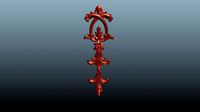
molding
...molding
3dexport
molding, casting, baguette, decoration
3d_export
$10

molding
...molding
3dexport
molding, casting, baguette, decoration
3d_export
$10

molding
...molding
3dexport
molding, casting, baguette, decoration
design_connected
$16

Mold
...mold
designconnected
eternit mold computer generated 3d model. designed by charlot, michel.
Pattern
3d_export
$10

pattern
...pattern
3dexport
old carved pattern
3d_ocean
$4

Window Pattern
...c4d cinema4d design element geometry geometry pattern grill pattern pattern vray vrayforc4d window pattern
window or wall pattern
design_connected
$18

Pattern
...pattern
designconnected
emu group pattern computer generated 3d model. designed by levy, arik.
3ddd
$1

pattern
...pattern
3ddd
решетка
1000x1000
3ddd
$1

Stucco pattern
...stucco pattern
3ddd
розетка
stucco pattern
3d_ocean
$10

Pattern
...pattern
3docean
extrude
national ornament
turbosquid
$6

Pattern
... available on turbo squid, the world's leading provider of digital 3d models for visualization, films, television, and games.
3d_export
$5

pattern
...pattern
3dexport
cnc router --3d printer
turbosquid
$25

Wall Pattern A05 (pattern only)
... available on turbo squid, the world's leading provider of digital 3d models for visualization, films, television, and games.
turbosquid
$25

Wall Pattern A04 (pattern only)
... available on turbo squid, the world's leading provider of digital 3d models for visualization, films, television, and games.
Cnc
3d_export
$35

Cnc
...cnc
3dexport
the cnc machine is unfinished
3d_export
$10

cnc router
...cnc router
3dexport
prototipe cnc router
3d_export
$10

cnc machine
...cnc machine
3dexport
cnc machine model with individual model files with assembly
3d_export
$5
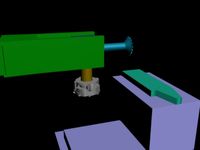
Cnc 3D Model
...cnc 3d model
3dexport
cnc
cnc 3d model csiszar 61289 3dexport
turbosquid
$10

cnc bedroom
...osquid
royalty free 3d model cnc bedroom for download as max on turbosquid: 3d models for games, architecture, videos. (1494981)
turbosquid
$9
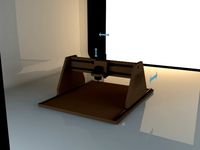
cnc(wood)
...rbosquid
royalty free 3d model cnc(wood) for download as max on turbosquid: 3d models for games, architecture, videos. (1189189)
turbosquid
$1

CNC Frame
...rbosquid
royalty free 3d model cnc frame for download as stl on turbosquid: 3d models for games, architecture, videos. (1371706)
turbosquid
free

cnc table
...rbosquid
royalty free 3d model cnc table for download as max on turbosquid: 3d models for games, architecture, videos. (1500926)
turbosquid
$30
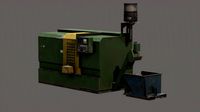
CNC Lathe
...
royalty free 3d model cnc lathe for download as max and obj on turbosquid: 3d models for games, architecture, videos. (1284634)
turbosquid
$25

CNC Machine
...
royalty free 3d model cnc machine for download as ma and fbx on turbosquid: 3d models for games, architecture, videos. (1307199)
Sculpture
archibase_planet
free

Sculpture
...sculpture
archibase planet
sculpture hen garden sculpture
sculpture 1 - 3d model (*.gsm+*.3ds) for exterior 3d visualization.
archibase_planet
free

Sculpture
...sculpture
archibase planet
sculpture chicken garden sculpture
sculpture 2 - 3d model (*.gsm+*.3ds) for exterior 3d visualization.
archibase_planet
free

Sculpture
...ture
archibase planet
sculpture rooster garden sculpture cock
sculpture 3 - 3d model (*.gsm+*.3ds) for exterior 3d visualization.
3ddd
$1

SCULPTURE
...sculpture
3ddd
статуэтка
sculpture
3ddd
$1

sculpture
...sculpture
3ddd
девушка , скульптура
sculpture
3ddd
free

Sculpture
...sculpture
3ddd
статуэтка
sculpture 3dmodels
turbosquid
$19

Sculpture Sculpture Venus
... available on turbo squid, the world's leading provider of digital 3d models for visualization, films, television, and games.
3ddd
$1

Sculpture
...sculpture
3ddd
статуэтка
highly shading sculpture
3ddd
$1

Sculpture
...sculpture
3ddd
статуэтка
sculpture 3d model.
archibase_planet
free

Sculpture
...sculpture
archibase planet
sculpture statue statuette
sculpture n070913 - 3d model (*.gsm+*.3ds) for interior 3d visualization.
Nature
turbosquid
$2

Nature
...
turbosquid
royalty free 3d model nature for download as max on turbosquid: 3d models for games, architecture, videos. (1667116)
3d_export
$5

scene nature
...scene nature
3dexport
scene nature
turbosquid
$1

nature
... available on turbo squid, the world's leading provider of digital 3d models for visualization, films, television, and games.
turbosquid
$10

Natural
...odel natural for download as max, max, max, max, fbx, and obj on turbosquid: 3d models for games, architecture, videos. (1580326)
3ddd
$1

blue nature
...blue nature
3ddd
blue nature
зеркало этническое деревянное
3ddd
free

Natural Reclaim
...natural reclaim
3ddd
natural reclaim wood дерево текстура
3ddd
$1

Bleu Nature
... гнездо , круглое
материал: дерево, стекло
производитель: halo
дизайн: bleu nature
3ddd
$1

Lauren Natural Walnut
... walnut , walnut
lauren natural walnut and black dining chair
design_connected
$16

Bandas Natural
...bandas natural
designconnected
gandia blasco bandas natural computer generated 3d model. designed by urquiola, patricia.
3ddd
free

KIINAU, BLEU NATURE
...kiinau, bleu nature
3ddd
bleu nature
настольная лампа kiinau, bleu nature
Paintings
archibase_planet
free

Paints
...paints
archibase planet
paints paint
paints n241211 - 3d model (*.3ds) for interior 3d visualization.
archibase_planet
free

Paint
...paint
archibase planet
jar of paint paint can
paint - 3d model (*.gsm+*.3ds) for interior 3d visualization.
3ddd
$1

paint
...paint
3ddd
paint
archibase_planet
free

Paint
...paint
archibase planet
paint
paint - 3d model (*.gsm+*.3ds) for interior 3d visualization.
3ddd
$1

Painting
...painting
3ddd
картина
painting in double wooden frame decorated antique
3ddd
$1

The collection of paintings
...
картина , фото
collection of modern and contemporary paintings.
contemporary paintings.
turbosquid
$29

painting
...free 3d model painting for download as 3ds, obj, c4d, and fbx on turbosquid: 3d models for games, architecture, videos. (1383201)
turbosquid
$1

Painting
...ee 3d model painting for download as 3ds, obj, md3, and blend on turbosquid: 3d models for games, architecture, videos. (1207611)
turbosquid
free

Painting
... 3d model painting for download as ma, 3ds, max, obj, and fbx on turbosquid: 3d models for games, architecture, videos. (1219609)
3ddd
$1

PAINTINGS
...paintings
3ddd
панно
размеры:
1170х900
Character
3d_export
$5

character
...character
3dexport
character fbx
3d_export
$5

character
...character
3dexport
turbosquid
$17

Characters
...turbosquid
royalty free 3d model characters for download as on turbosquid: 3d models for games, architecture, videos. (1653928)
turbosquid
$119

characters
...rbosquid
royalty free 3d model characters for download as ma on turbosquid: 3d models for games, architecture, videos. (1311208)
turbosquid
$10

Character
...rbosquid
royalty free 3d model character for download as max on turbosquid: 3d models for games, architecture, videos. (1144776)
turbosquid
$7

Character
...osquid
royalty free 3d model character for download as blend on turbosquid: 3d models for games, architecture, videos. (1301899)
turbosquid
$5

Character
...osquid
royalty free 3d model character for download as blend on turbosquid: 3d models for games, architecture, videos. (1298205)
turbosquid
$2

character
...osquid
royalty free 3d model character for download as blend on turbosquid: 3d models for games, architecture, videos. (1381232)
3d_ocean
$8

Man Character
...man character
3docean
character game character lowpoly man
low poly character c4d and obj 3420 polygon
turbosquid
$30

Character
...d
royalty free 3d model character for download as ma and fbx on turbosquid: 3d models for games, architecture, videos. (1474420)
Wall
turbosquid
$5

Wall and UDK Wall
... available on turbo squid, the world's leading provider of digital 3d models for visualization, films, television, and games.
archibase_planet
free

Wall
...wall
archibase planet
batten wall plywood partition
batten wall - 3d model for interior 3d visualization.
3d_ocean
$5

Wall
...wall
3docean
low polgon wall low stone old wall stone wall
2048*2048 tex obj,fbx,blend format. low polygon. game ready.
3ddd
$1

wall
...wall
3ddd
камень , кладка
damaged stone wall
3d_export
$5

wall
...wall
3dexport
room with a wall with doors made of wood and leather
3ddd
$1

WALL FREAMS
...wall freams
3ddd
wall freams
wall freams
3ddd
$1

WALL-E
...wall-e
3ddd
wall-e , робот
wall-e
3ddd
$1

WALL PANNEL
...wall pannel
3ddd
панель
wall pannel for enterance wall.
3d_export
$18

great wall-city wall-dianjiangtai
...great wall-city wall-dianjiangtai
3dexport
great wall-city wall-dianjiangtai<br>3ds max 2015
turbosquid
$5

Wall
...wall
turbosquid
royalty free 3d model wall for download as on turbosquid: 3d models for games, architecture, videos. (1522889)
Decoration
3d_ocean
$3

Decoration
...arabic.arab decoration decorative plaster isalm islamic other decorative objects panel pattern stone wall
decoration for building
3d_ocean
$3

Decoration
...sic arabic.arab decoration decorative plaster isalm islamic other decorative objects panel pattern stone wall
decoration plaster…
3d_export
$10

decor
...decor
3dexport
decor
3d_export
$5

decor
...decor
3dexport
decor
archibase_planet
free

Decor
...decor archibase planet decor statuette decoration leaf decor 2 - 3d model (*.gsm+*.3ds) for interior...
3d_export
$10

decor
...decor
3dexport
lattice decor
3ddd
$1

DECOR
...decor
3ddd
панель
decor
3ddd
$1

Decor
...decor
3ddd
панель
decor
3ddd
$1

Decor
...decor
3ddd
панель
decor
3ddd
free

DECOR
...decor
3ddd
панель
decor
Texture
3d_ocean
$5

Textured Plaster Seamless Texture
...fect for gaming and animation. created from photographs. texture, bump, normal jpg maps are all included in this download! enjoy!
3d_ocean
$6

Texture Bundle
...s i have and will make these six textures were made in photoshop and may requier photoshop or programs like photoshop to edit ...
3d_ocean
$4

Tile Textures
...le dark easy green grungy mosaic mosaic textures mosaica pattern texture tileable tiled tiles
8 colored tileable mosaic textures.
3d_ocean
$5

Textured Ceiling Plaster Seamless Texture
...tion. created from photographs. texture, displacement, normal jpg maps are all included in this download! displacement map can...
3ddd
$1

texture wood
...texture wood
3ddd
texture wood
3ddd
free

Wood texture
...wood texture
3ddd
wood texture
3d_ocean
$3

Wool texture
...wool texture
3docean
seamless wool texture
3ddd
$1

classic texture
...classic texture
3ddd
high resolution texture
3ddd
$1

Concrete texture.
...concrete texture.
3ddd
бетон
concrete texture.
3d_ocean
$12

Granite texture
... (each in separate png file, 2400×1500 px) and one large tileable texture with bump/displacement and specular map (6000×6000 p...
